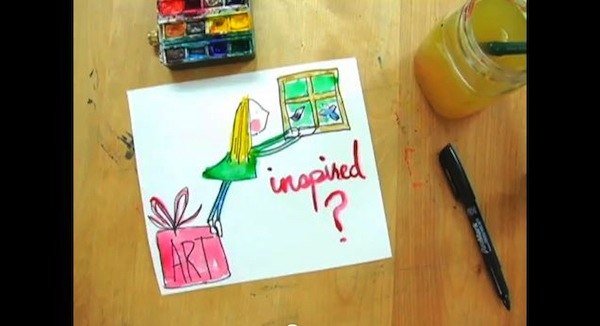There's been a lot of response to my last article. This really interesting challenge just arrived in my inbox. In fact, it’s so strong that I’m publishing it in full. It’s from Janet Blatter, a cognitive scientist, author, and film script and development consultant.
"All art, in some way or another, is situated in the world, hoping to act as a transformer between the self and the non-self."- Robert Hughes, The Shock Of The New (BBC, 1980)
So does it matter today, when we are saturated in visual imagery, whether or not we can distinguish between art and non-art?
What follows is a really thorough challenge to my last article, But Is It Art?. In fact, it’s so strong that I’m publishing it in full. It’s from Janet Blatter, a PhD cognitive scientist, author, and film script and development consultant.
jb: Let's assume you are referring to YouTube as a distribution medium of video "stuff", some of which is "art" (whatever that means). Are you suggesting that "art" cannot be appreciated as such by the masses that flock to YouTube to get their fix of dancing cats? Is it the fact that "art" is co-habitating with pop culture on YouTube that seems to threaten the future of art as we know it (this being the most recent claim that people are getting dumber and culture is going to Hell)? Is it the sheer quantity of "stuff" and "art" that is challenging?
Beyond YouTube as being a sort of virtual vanity gallery or private press, artists have had recourse to using the street, vacant buildings, salons to create exhibit their wares, much for the same reason that artists use YouTube - to generate buzz, to turn 15 minutes of fame into 15,000 hits that pique the interests of some gatekeeper to give them 1,500 of square feet of solo presentation/exhibition space of their work that will be seen by less but somehow more "cultured" viewers (yes, that's a cynical note).
There is an implied distinction between good art and bad pop culture in the question. I don't think mediocrity or aesthetic sublimity is inherent in either art or "entertainment" as they bed together on YouTube. I prefer getting my aesthetic fix from good "stuff". This is nothing new. Picasso picked out a "transformer" (Hughes' term - vague in my use as it was in his) from a Benin religious artifact. Museums exhibit vases and cups that were sold and used by the hoi palloi...and modern culture did not decline. For all we know, the Lascaux cave paintings weren't made by the designated artist, weren't crafted to be "transformational" in Hughes' sense; they could have been used as part of a multimedia lesson on how to catch your food!!! In other words, we really can't distinguish art from non-art in the cave paintings and what difference does it make?
Too saturated by visual imagery? The more I see, the better I become in filtering things out. I imagine that's the case with most people.
Surrounded by dreck? I find it very easy to filter out the good from the bad and ugly (all subjective and context based anyway).
I bless the people who share "stuff" and/or "art" on YouTube, who have de-commodified the extrinsic (read $$$) value of their videos, who have made it possible for me to see art that I would have never had access to before. If I have to wade through some dross to get to the gold, I say bring it on!!!
So my answer is that of course some of the "stuff" on YouTube is "art'', some if it even good art. And one does not have to always go to "art" to get to one's "self transformed" (paraphrasing Hughes).
A more precise question was eloquently coined by the late philosopher of art, Nelson Goodman (1906-1998): "When is art?" In other words, when does the "stuff" we see prompt us to call it art? "An inert or purely utilitarian object may come to function as art, and a work of art may come to function as an inert or purely utilitarian object. Perhaps, rather than art being long and life short, both are transient.”
But YouTube/contemporary culture did not invent this question. If 2000 years of Western philosophy didn't settle this debate, do you really thing it's going to finally be resolved here;-?
- Janet Blatter










